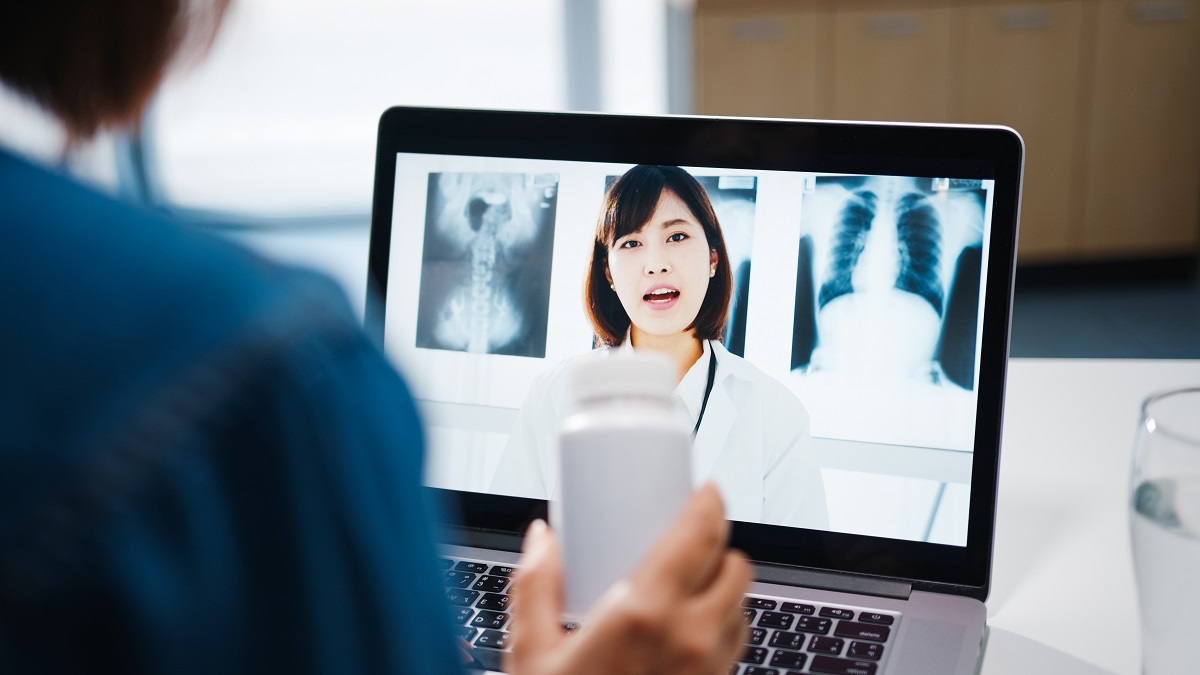Executives from companies associated with Saúde Digital Brasil highlight the benefits of technological advances and digital transformations for laboratories and diagnostic medicine centers
The benefits of digital health go beyond primary care, medical consultations and interconsultations. Technological advances, as well as the regulation of telehealth in the country, impact, expand and democratize access to health services, helping to transform other links in the health chain, and diagnostic medicine is one of them.
According to Wilson Shcolnik, Institutional Relations at Grupo Fleury, advisor to Saúde Digital Brasil and president of the Brazilian Association of Diagnostic Medicine (Abramed), the digitalization of healthcare has contributed to improving healthcare processes throughout the sector. In addition, agility, safety and increased access to healthcare services are aspects that have been widely demonstrated.
“Telepathology and teleradiology are already a reality in our country, on par with first world countries. At a time when we are seeing the creation of ecosystems with an increase in the variety of services offered by companies that work in diagnostic medicine, the importance of digitalization grows even more”, he emphasizes.
However, according to Shcolnik, there are still challenges to be overcome, such as the interoperability of systems and data. Although standards have been defined regarding these aspects by the Ministry of Health since 2011, they have not yet been implemented in the routine of radiology and imaging diagnostic laboratories and clinics. “It is urgent to resume discussions on this topic, so that the role of each interested party becomes clear and enables the desired advances. Saúde Digital Brasil, for example, can drive and stimulate its members through discussions that reveal the benefits that digital health can bring to users, health professionals and managers. The potential brought by the generated savings, the expanded access to services and the security need to be well understood by everyone”, he emphasizes.
Leonardo Vedolin, general medical and integrated care director at Dasa, an integrated healthcare network that serves patients from diagnosis to high complexity, agrees that digital health is an important transformative agent. In addition to expanding access, which was clearly demonstrated during the pandemic, he cites improved experience and integrated care as benefits that deserve to be highlighted. Expanded access is achieved through the use of digital technologies, such as telemedicine, and efficiency gains that increase the possibility of more people entering the system. More digital, intuitive and interactive journeys enhance user experience and engagement. And the more intelligent, predictive and prescriptive use of data integrates crucial information that increases quality and improves clinical outcomes.
The executive says he is very optimistic about the incorporation of new technologies, such as artificial intelligence models, the Internet of Things/5G, more widespread use of sensors, and the growth of 3D printing. “At Dasa, our Operations and Control Center, the NOC, monitors indicators in real time via sensors and databases and generates information that helps decision-making to improve the patient experience and operational management processes. Our medical innovation team, at DasAInova, created hundreds of AI models that improved the performance of MRI equipment, reduced “no-shows” in diagnostic units, and introduced additive 3D printing models that contributed to people’s safety at the beginning of the pandemic,” he emphasizes.
Vedolin also explains that, by using algorithms, the integrated healthcare network was able to significantly reduce the SLA for cardiology exams. An electrocardiogram, which used to take 24 hours to issue a report, is now issued in two hours. “It is also important for users to adopt new technologies, which further scale advances. In the third quarter of 2022, for example, we had more than 13 million accesses to our virtual assistant, Nav. This number was seven times higher than in the same period in 2021. In other words, people want to incorporate and use these resources in search of a more fluid healthcare journey. And professionals too, because the number of users of Nav Pro, the version for doctors, increased by 51% compared to the first quarter of this year with the same period in 2022, reaching almost 41.1 thousand.”
Regarding the challenges, he believes that, although there are many, they are not insurmountable. Investments in customer experience (CX) and attention to legislation, including the law that regulates telemedicine and the LGPD, are crucial points to observe. “Digital Health Brazil is important to guide this debate in society and, especially, in the health sector. Dasa is part of the Association because it understands that digital health, systems integration and other innovations are transforming our area towards a hybrid journey, which aims to be continuous and integrated, bringing the best experience to patients and doctors, in a more intelligent and sustainable way”, reinforces Vedolin.
And it is precisely the impact on the user experience that is one of the benefits highlighted by Istvan Camargo, innovation manager and head from Skyhub.bio, hub Sabin Group's open innovation program. Diagnostic medicine, according to him, can benefit from advances in digital health by eliminating unwanted friction in the patient journey, as well as expanding and facilitating their access to clinical analysis exams and diagnostic imaging. In addition, these same advances can help capture operational efficiency gains in activities front-end and back office, in the creation of new products and services and in the diversification of current business models.
“We have seen significant advances in creating innovative user experiences, such as the growing offer of mobile collection and new ways of scheduling, without the need for phone calls and sending paper documents. The application of artificial intelligence has also advanced in the sector, making the results of clinical analysis exams, genomic tests and imaging exams faster, more accurate and sometimes predictive. Finally, we have seen the growing use of data and technology to integrate the various patient journeys, through the launch of new types of services and business models that did not exist just a few years ago”, emphasizes Camargo.
For the executive, scaling access to health services, with sustainability, expanding the offer of quality solutions, in a humanized way, for the population throughout the national territory, is still a challenge. “The role of Saúde Digital Brasil is crucial, both for the advancement of telehealth and for the evangelization of technological innovation in the sector. I also believe that the entity can help accelerate the integration of these new value propositions with the current delivery models in force in Health”, he concludes.
Saúde Digital Brasil’s main goal is to champion the cause of telehealth healthcare in Brazil, encouraging a complete digital patient experience and integrating all links in the chain. The organization, which already has important industry players among its members, has been working hard to support the digitalization of laboratories and diagnostic centers through its working groups, government relations initiatives, and others, which aim to stimulate the development and improvement of telehealth. To become a member, please contact us at contato@saudedigitalbrasil.com.br.





